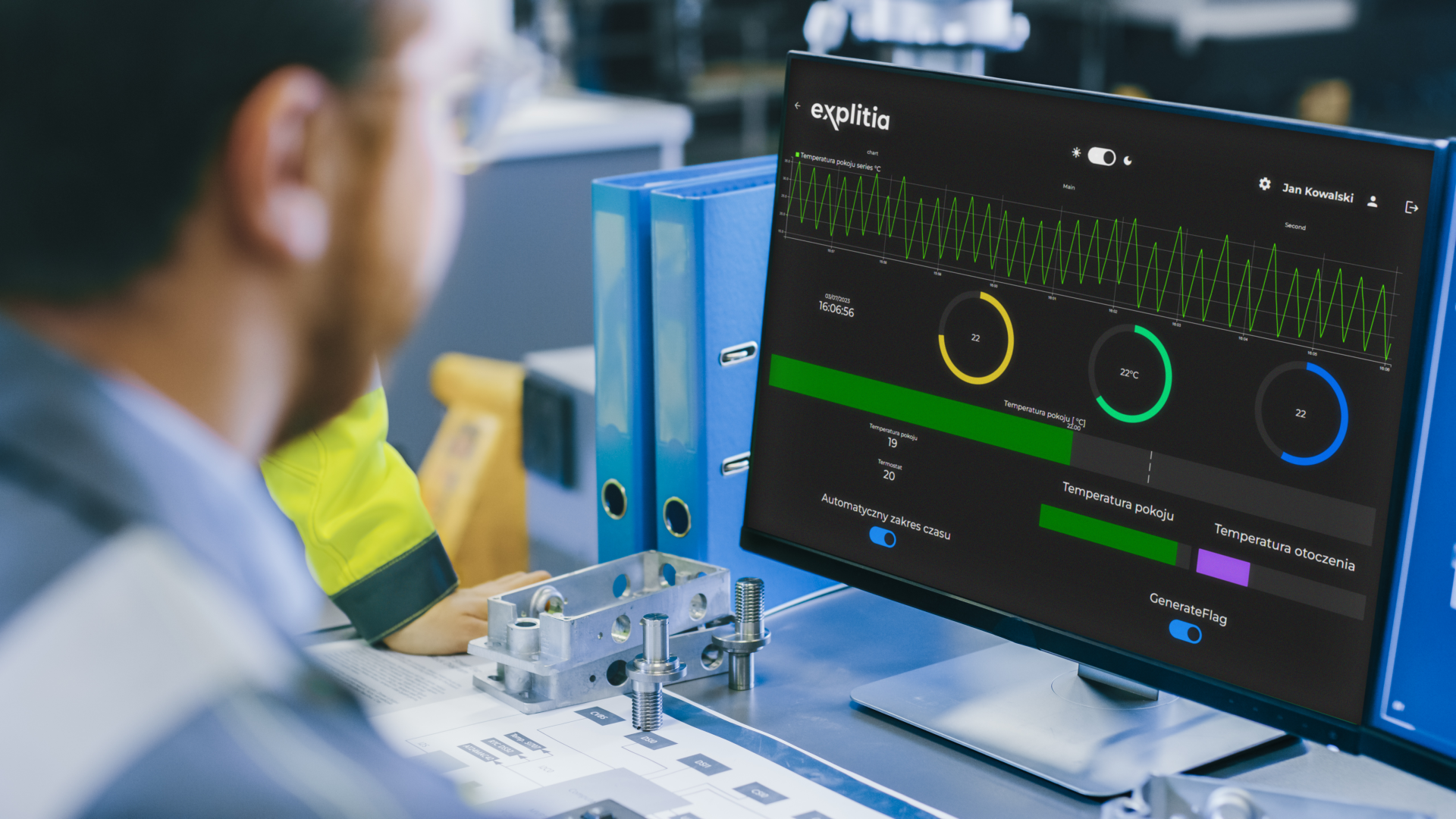In today’s dynamic industrial environment, effective quality management has become a crucial element in the success of companies. In this context, the Statistical Process Control (SPC) system serves as a powerful tool supporting manufacturing companies in maintaining the highest quality standards.
How does the SPC system work? What benefits does it bring to enterprises? Why is advanced statistical analysis so important for efficient management of manufacturing processes? We invite you to read the article!
What is the SPC system?
SPC (Statistical Process Control) is a method of quality management in production processes based on monitoring and controlling key parameters using statistical tools. The aim of SPC includes:
- Maintaining the process within specification limits,
- Minimizing variation,
- Ensuring the production of products meeting the highest quality standards.
The solution is based on the analysis of measurement data collected during the production process, enabling a proactive approach to quality.
Components of the SPC system
Control Charts: These are a key element of SPC, allowing visualization of data variability over time. They are an effective tool for detecting deviations from the norm and identifying irregularities in the process. They enable quick responses to potential issues and minimize the risk of defects.
Process Capability Analysis: SPC allows the assessment of whether a process is capable of producing products that meet specified requirements. It uses measures such as Cpk and Ppk. They allow precise assessment of process capability and identification of areas requiring optimization.
Cause and Effect Analysis: It helps understand why irregularities occur in the process by identifying causes and their effects.
Pareto Analysis: Identifies the most significant sources of problems in the process, classifying them by frequency. This is a crucial tool in eliminating major causes of production problems, product defects, or delays.
Regression Analysis: Facilitates understanding the relationships between different variables in the process and predicting the impact of changes on product quality.
Benefits of introducing the SPC system
1. Increased digitization and cost minimization
Introducing SPC is a step towards Industry 4.0, where innovative technologies support the digitization of the manufacturing plant. Improved process quality, defect reduction, and production optimization contribute to minimizing manufacturing costs, leading to increased operational efficiency and greater savings.
2. Proactive approach to quality:
SPC introduces a proactive approach to quality, allowing the identification and removal of potential problems in advance.
3. Improved product quality and waste reduction:
Continuous monitoring of production processes allows SPC to quickly detect deviations from the norm and take immediate corrective actions. The result is an improvement in the quality of manufactured products and a reduction in the number of defects and waste.
4. Process optimization and rapid response to changes:
SPC provides analytical data that enhances the understanding of production processes. On this basis, improvements can be made, and changes in production parameters can be responded to quickly.
5. Increased customer trust and competitiveness:
Through improved product quality and minimized risk of defects, a company can gain greater customer confidence. This, in turn, translates into increased customer loyalty and improved competitiveness.
6. Process standardization and precise analyses:
Implementing SPC enforces the standardization of manufacturing processes, ensuring the consistency of all results. Additionally, the system allows for the generation of detailed reports and analyses, supporting management based on reliable data.
Why is advanced statistical analysis necessary?
Statistical analysis within SPC offers more than simple parameter monitoring. Here are a few reasons why it is crucial:
Detecting subtle changes: Advanced analyses allow for the detection of subtle changes in data that may signal the onset of problems. This makes it possible to intervene in advance.
Understanding causes: Identifying deeper causes of problems allows not only reacting to deviations but also eliminating their sources.
Predictive analysis: Advanced statistical analysis techniques enable the prediction of future trends, supporting resource planning and corrective actions.
Parameter optimization: Identifying the best process parameter settings translates into improved product quality and process efficiency.
Cause-and-effect analysis: Advanced statistical analysis reveals complex dependencies between variables, allowing targeted corrective actions.
Optimal quality control approach: Techniques such as process capability analysis allow an accurate assessment of the capability of the process to produce compliant products.
Process improvement: Analysis identifies areas for optimization, contributing to long-term process improvement.
In conclusion, the SPC system not only supports the maintenance of the highest quality standards but also serves as a key to transforming manufacturing enterprises towards Industry 4.0. Innovative software enables companies to achieve new heights of efficiency and competitiveness in the global market.
Contact us
Do you want to move your production plant to level 4.0? Are you interested in modern solutions for industry in the field of automation and digitisation? Be sure to let us know!


